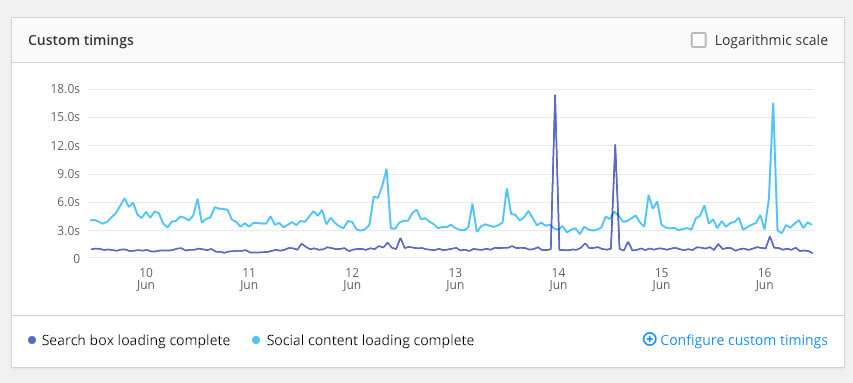Custom timings for Real User Monitoring: track timing events easily
Posted May 31, 2017 | 2 min. (403 words)Click here for the latest updates to the custom timings feature.
Raygun is happy to announce a custom timings feature for Real User Monitoring.
By default, Raygun will pick up the OnContentLoaded event which can be very helpful. However, oftentimes there are other timing events that you’d like to track.
This is especially helpful in the following examples:
Measuring the time until the user can interact
Amazon.com would famously track when the search bar was rendered and was interactive to the user. This meant the user could engage, and it was well before the PageLoad event had fired. It was more realistic that customers were ready to work with the site.
Measuring the time on various sub-systems
An example that we use ourselves at Raygun is timing how long the front-end frameworks take to initialize. This includes building up the client side model and binding to it. This time can become significant as your application gets more complex, so timing it using the custom timings feature can give a lower level insight into what that process is really costing you.
*Note: customers have a maximum of 10 custom timings per application
Custom Timings at a glance
Enabling custom timings is easy as using the slider:
Define a name and description with the ‘Custom timing settings’. You can also select an optional color code for each timing:
In Real User Monitoring, navigate to the ‘Performance’ page to select the module in which the custom timing occurs. From here, you can view the currently enabled timings:
The average load time graph
At times, you may need to view a graph of your custom timings so you can understand your average load times. As of June 2018, we’ve added a chart that show the average load times of your custom timings. We’ve also included an option to toggle series on and off and an checkbox option to view the graph in a logarithmic scale:

You can find the graph by heading to Real User Monitoring and selecting the ‘Performance’ page.
Here’s a simple example from our documentation for how custom timings would work in an application.
Do you have any questions about the custom timings feature? Get in touch with a friendly team member.
Other articles you may find useful:
Did you know Raygun’s best features are available out of the box?
Breadcrumbs for Raygun Crash Reporting
What is software intelligence? A guide for software professionals